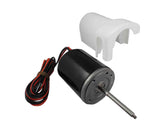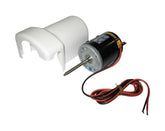Plumbing
Filter
81 results
20
- 10
- 15
- 20
- 25
- 30
- 50
Featured
- Featured
- Best selling
- Alphabetically, A-Z
- Alphabetically, Z-A
- Price, low to high
- Price, high to low
- Date, old to new
- Date, new to old
Sort
Sort by:
- Featured
- Best selling
- Alphabetically, A-Z
- Alphabetically, Z-A
- Price, low to high
- Price, high to low
- Date, old to new
- Date, new to old
-
Toilet Portable 10L
Easy to use: simply fill the fresh water tank on the top with water, pull out the slide valve, lift lid and sit down. Once you've finished, use the handy injection piston flush feature to pump the waste into the waste holding tank at...- $170.00
$0.00- $170.00
- Unit price
- / per
-
Toilet Portable 20L
Easy to use: simply fill the fresh water tank on the top with water, pull out the slide valve, lift lid and sit down. Once you've finished, use the handy injection piston flush feature to pump the waste into the waste holding tank at...- $196.00
$0.00- $196.00
- Unit price
- / per
-
-
-
Seat Soft Close - Space Saver & Compact
Soft close seat suitable for Space Saver / Compact bowl or Comfort bowl, on manual or electric toilets. MPN: 6500000002- $130.00
$0.00- $130.00
- Unit price
- / per
-
Seat Soft Close - Comfort Model
Soft close seat suitable for Space Saver / Compact bowl or Comfort bowl, on manual or electric toilets. MPN: 6500000004- $144.00
$0.00- $144.00
- Unit price
- / per
-
Seat & Lid Lite-Flush
Seat & Lid 2 Top 3 Intake Elbow & Clip MPN: 58530-1000b- $185.00
$0.00- $185.00
- Unit price
- / per
-
Seat & Lid Lge Soft-Close
Seat, Lid & Hinges (Standard Soft Close) MPN: 29127-0003- $204.00
$0.00- $204.00
- Unit price
- / per
-
Seat & Lid Deluxe Flush
Seat & Lid Deluxe Flush (Standard) MPN: 58104-1000- $339.00
$0.00- $339.00
- Unit price
- / per
-
Complete Seat Assy -Std
Seat, Lid & Hinges (Standard Compact) MPN: 29097-1000- $212.00
$0.00- $212.00
- Unit price
- / per
-
-
-
Flush Control Switch QF
Spare or replacement flush control switch for Jabsco Quiet Flush electric toilets. MPN: 37047-2000- $409.00
$0.00- $409.00
- Unit price
- / per
-
Service Kit DF Toilet
Service kits and parts to suit most Jabsco toilets - manual and electric. MPN: 58100-2000- $388.00
$0.00- $388.00
- Unit price
- / per
-
Motor For Elec Toilet 24v
Replacement Jabsco Toilet Motor 24V for Premjum Series 37010 Electric Toilets (37065-0000). MPN: 37065-0000- $626.00
$0.00- $626.00
- Unit price
- / per
-
Motor For Elec Toilet 12v
Replacement Jabsco Toilet Motor 12V for Premjum Series 37010 Electric Toilets (37064-0000) MPN: 37064-0000- $566.00
$0.00- $566.00
- Unit price
- / per
-
-
12v Motor & Macerator TMC
Complete motor, macerator and base assemblies to suit 12 or 24 volt TMC toilets.- $381.00
- $381.00
- Unit price
- / per
-
24v Motor & Macerator TMC
Complete motor, macerator and base assemblies to suit 12 or 24 volt TMC toilets.- $412.00
- $412.00
- Unit price
- / per
-
Macerator Pump 2006 12v
Bronze macerator and rubber impeller discharge pump which macerates and discharges waste and waste mixtures.The brass pump section is self-priming and this allows the unit to be mounted above the tank in any convenient location. MPN: 5500001112- $272.00
$0.00- $272.00
- Unit price
- / per






































